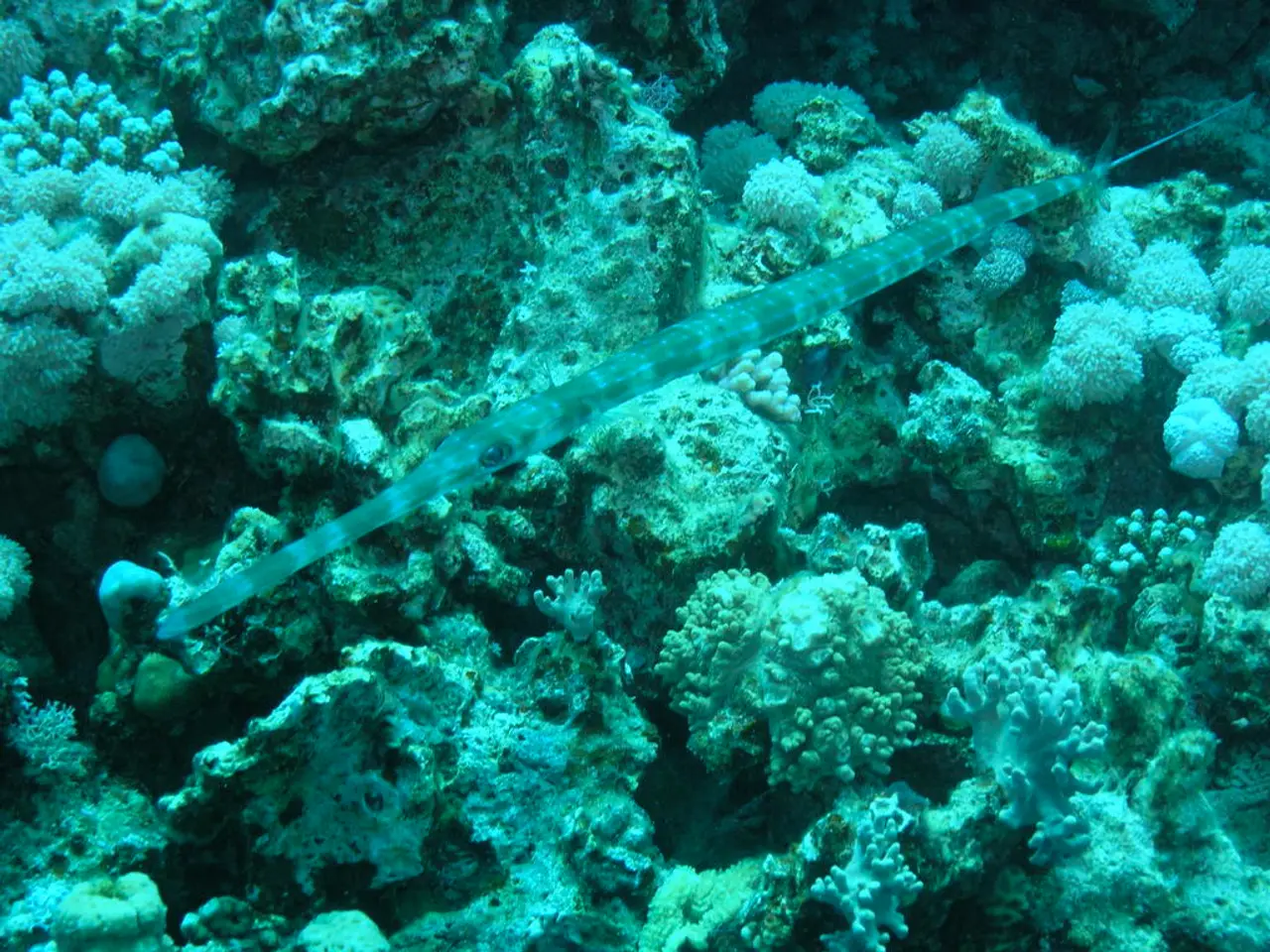Identify the Ocean Creatures: A Challenging Quiz for Marine Life Enthusiasts
In a recent quiz challenge, you were presented with a list of 39 sea animals, but the results on how many of these you can identify remain a mystery. The available sources do not provide a detailed result, so the only way to find out is by taking the specific quiz yourself.
As you delve into the world of marine life, let's explore some fascinating creatures from the list.
The flatback turtle, a native of the New Guinea coast, is a unique species with a flattened shell, designed for a life in the water. On the other side of the globe, the stonefish lives near the ocean floor and among coral reefs, its venom potentially fatal to humans.
The bluebanded goby, a small fish found in the Pacific Ocean, is a helpful member of the coral reef community, cleaning and nurturing the reef with its bodily functions. The giant triton, a large sea slug, thrives on hunting starfish, contributing to the preservation of coral reefs.
The Southern giant petrel, with its seven-foot wingspan, is a majestic bird that can be found soaring over the southern oceans. Harp seals, known for their ferociousness, are white when young and develop a distinctive harp-like pattern as they grow older.
The blue marlin, a large and speedy fish, is a prized catch for sport fishermen. Unlike the laughing gull, which sticks to the coast, the sand tiger shark prefers deeper waters and is facing extinction. The hourglass dolphin, a cold-water dweller, considers 32 degrees too warm.
The leatherback turtle, one of the only sea reptiles that can maintain its body temperature in cold water, is another fascinating creature on the list. The Indo-Pacific man-of-war, or the bluebottle, uses its tentacles to sting prey, but unlike its cousin, it has never caused any human deaths.
The dugong, a marine herbivore, eats seaweed and grass and never enters freshwater. Narwhals, found in the Arctic Ocean, are known for their unique horns that form on male individuals when they are around one year old.
The horseshoe crab, though often mistaken for a crab, belongs to the same family as spiders and scorpions. The Mexican lookdown has a remarkable camouflage ability, appearing barely visible from above and as wide as an angelfish from a side angle.
The olive sea snake is venomous but rarely bites humans, preferring to save its venom for hunting fish at night. The largest oarfish on record is 35 feet long, but sailors' tales speak of them reaching up to 50 feet!
The cushion star, with its unique stomach-folding ability, is a curious creature that starts life with five arms and grows together over time. The brown pelican, a familiar sight along coastlines, swoops into schools of fish to take large gulps of water containing its prey.
The stoplight loosejaw, a deep-sea dweller, is named after its hinged, skinless jaw and utilizes needle-like teeth to snag prey. The Australian leafy seadragon, a poor swimmer, relies on its camouflaging skills to hide from predators.
The vaquita, the smallest type of porpoise, can be found only near the Gulf of California in Mexico. The king eider, with its colourful feathers, prefers to eat shellfish and crustaceans, and both males and females incubate their eggs.
So, are you ready to test your ocean knowledge? Take the quiz and discover how many sea creatures you can identify! If you'd like some tips to improve your chances, just let me know!
- Science has uncovered diverse marine life, such as the flatback turtle and the stonefish, which belong to various habitats like coral reefs and the ocean floor.
- Some marine animals, like the bluebanded goby and the giant triton, contribute positively to their ecosystem, while others, such as the sand tiger shark, face extinction.
- Traveling to different regions may offer opportunities to observe amazing sea creatures up close, such as the Southern giant petrel in the southern oceans or the Mexican lookdown in its tropical waters.
- As you explore the lives of sea creatures, it's essential to consider climate change and its impact on their habitats to promote the conservation of marine environments.
- In addition to marine life, environmental science, lifestyle, fashion-and-beauty, food-and-drink, home-and-garden, travel, and sports sectors also require ongoing study and attention to ensure sustainability for future generations.





